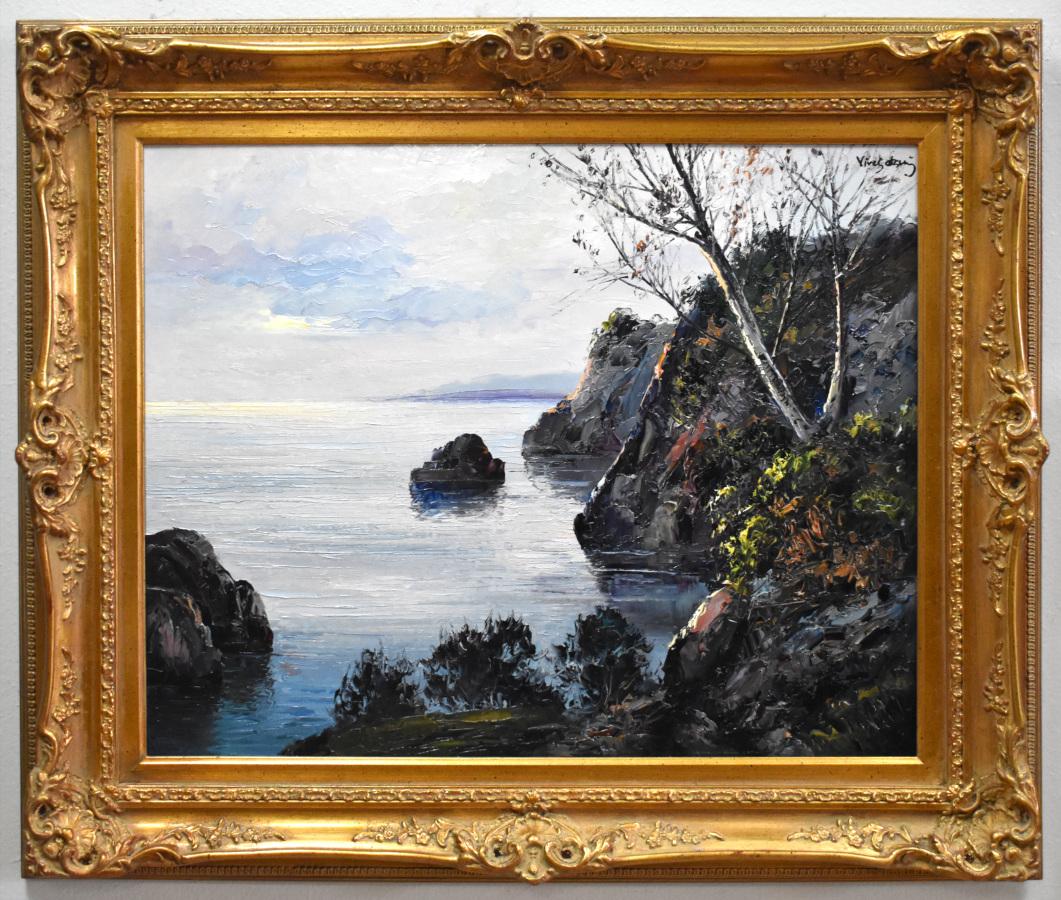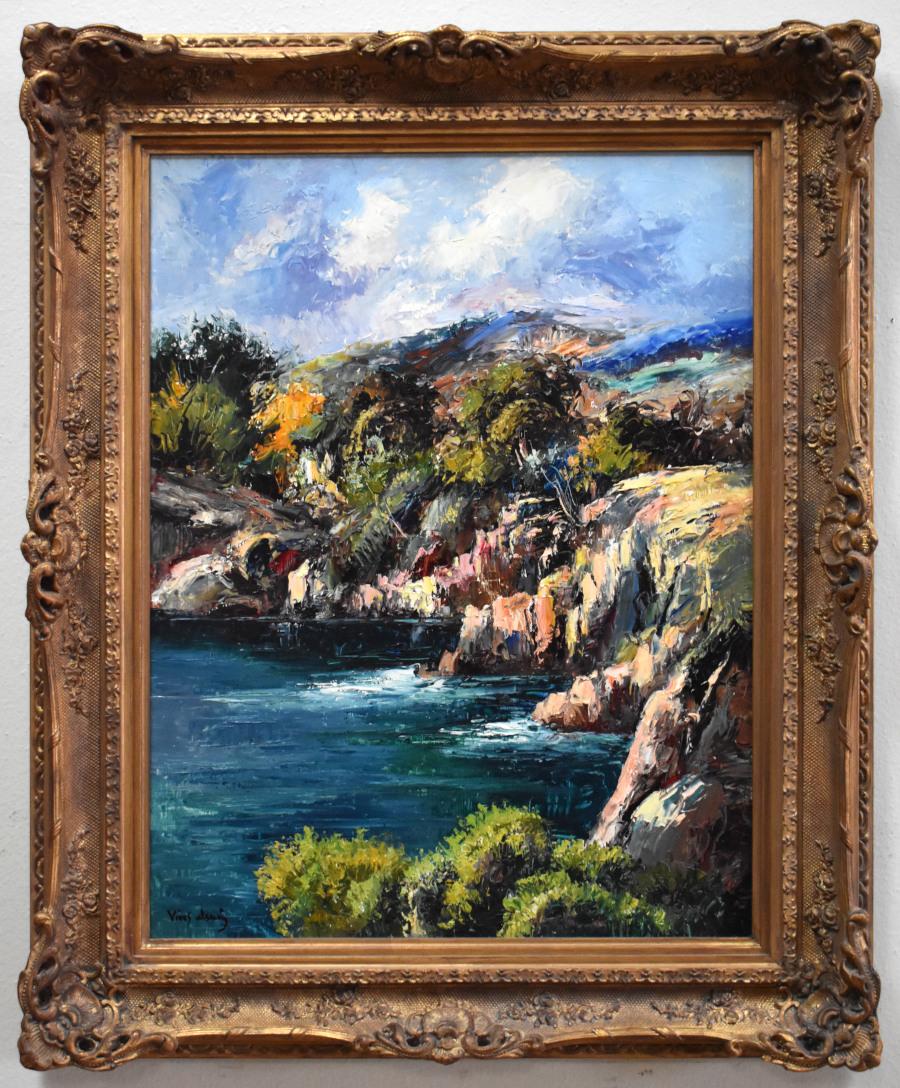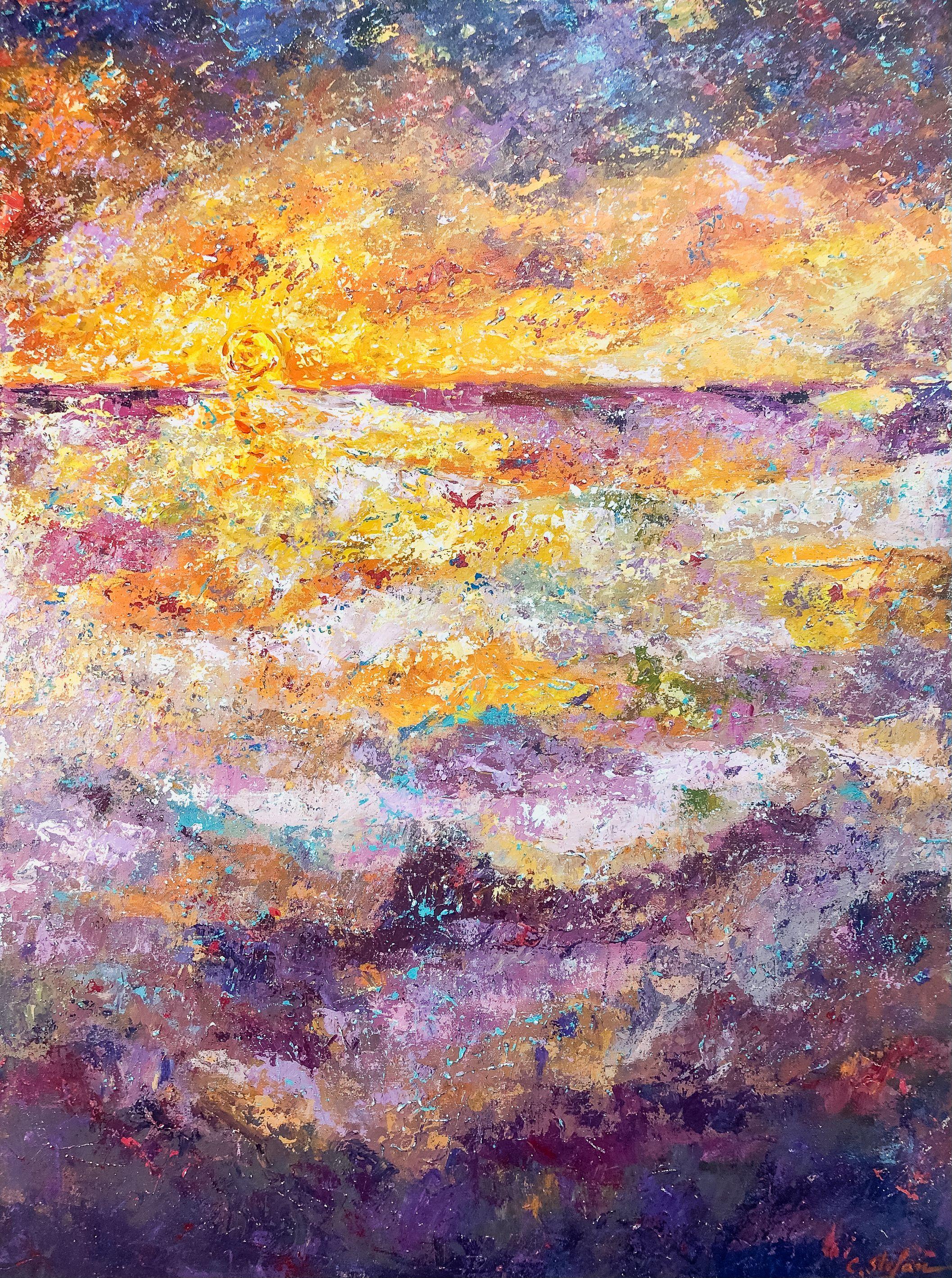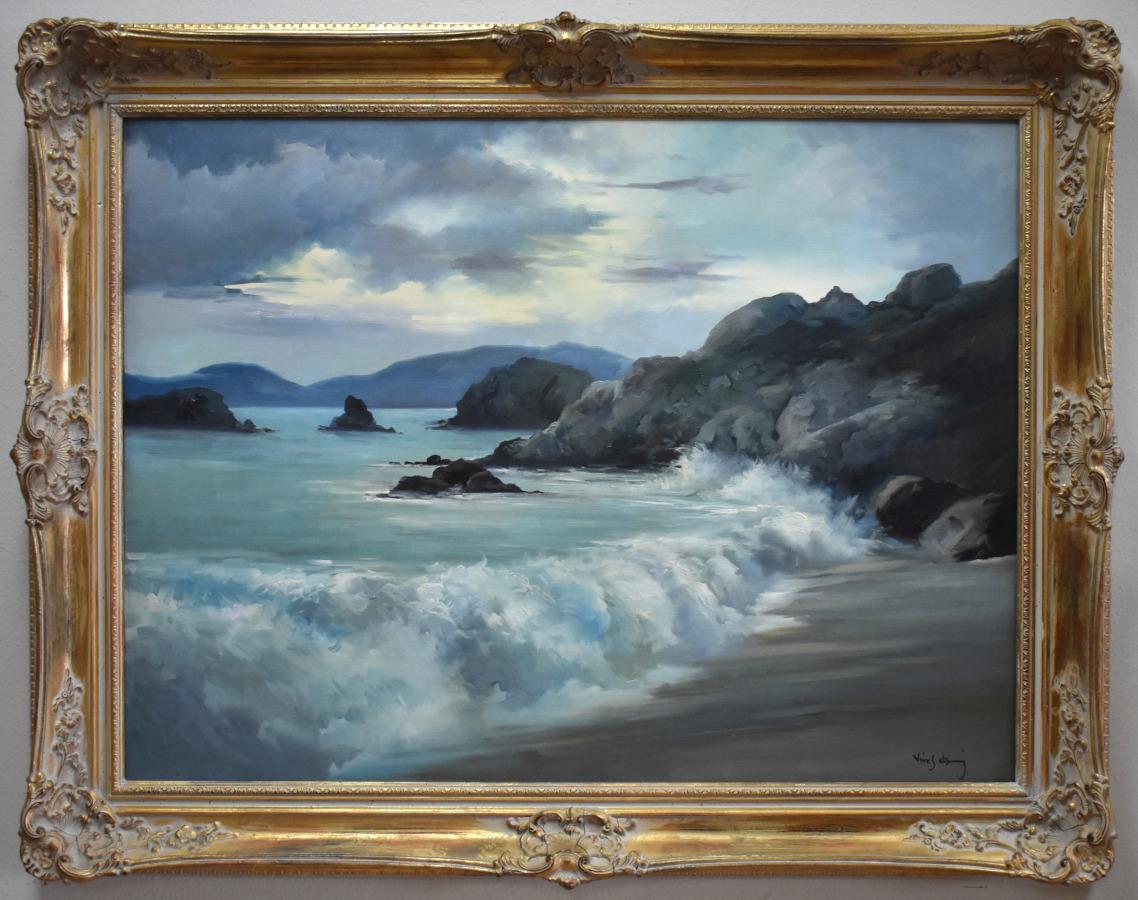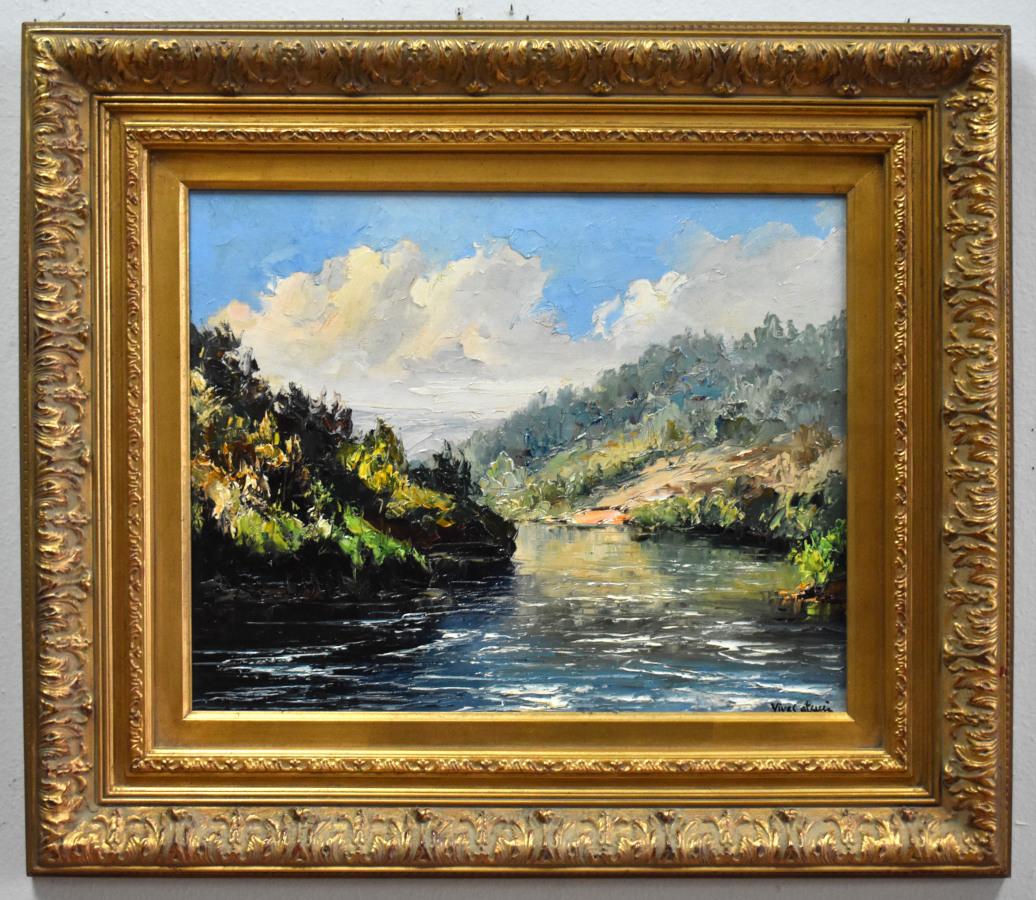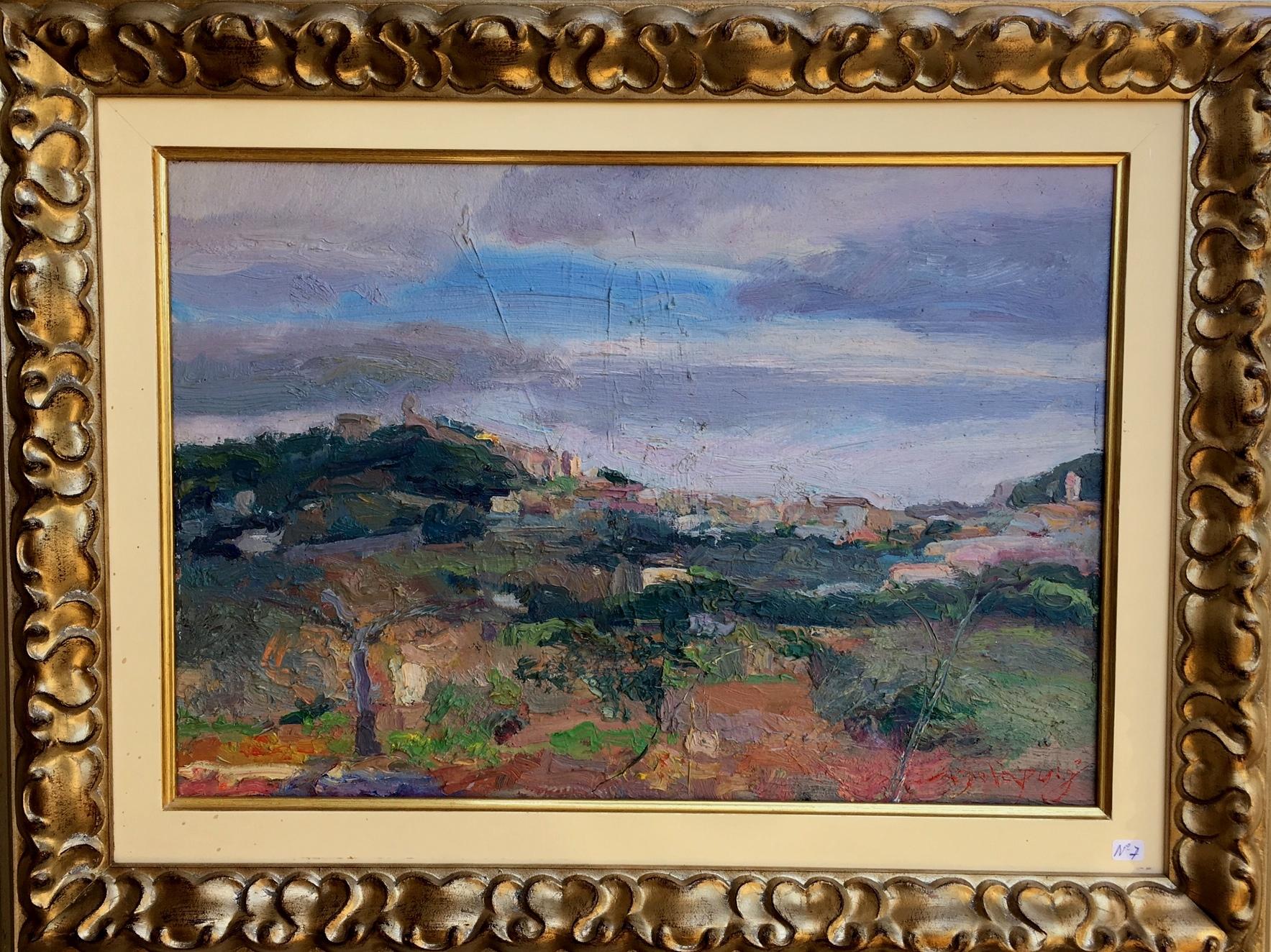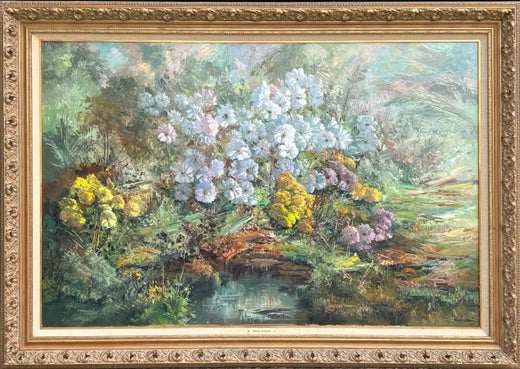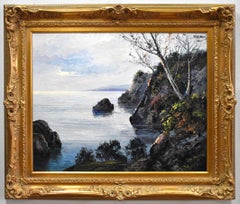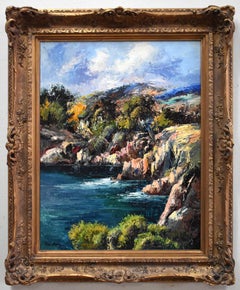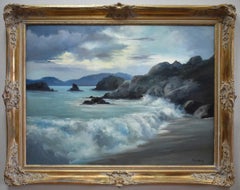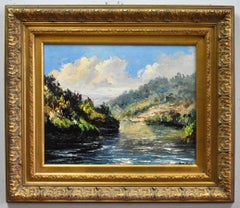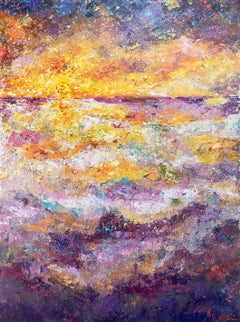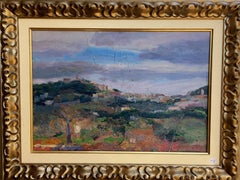Jose Vives-Atsara"SUNSET" COSTA BRAVA SPAIN OIL ON PANEL APPLIED BY PALETTE KNIFE FRAMED 39 X 49Dated 1977-78
Dated 1977-78
About the Item
- Creator:Jose Vives-Atsara (1919 - 2004, American)
- Creation Year:Dated 1977-78
- Dimensions:Height: 30 in (76.2 cm)Width: 40 in (101.6 cm)Depth: 3 in (7.62 cm)
- More Editions & Sizes:Image Size: 30 x 40 Frame Size: 38.75 x 48.75Price: $27,600
- Medium:
- Movement & Style:
- Period:
- Framing:Frame IncludedFraming Options Available
- Condition:Please visit my 1stdibs storefront for other Vintage, Mid Century & contemporary Texas paintings, sculpture, pottery and more.
- Gallery Location:San Antonio, TX
- Reference Number:1stDibs: LU769315123722
Jose Vives-Atsara
Jose Vives-Atsara was born in Vilafranca del Panades in the Catalonian region of Spain on April 30, 1919.. As a small boy he loved to sketch with pencil and paper. He developed a love of painting at an early age, and by age 11 had committed himself to becoming an artist. He studied at Colegio de San Ramón and had his first one-person show at age 14. Jose studied art at Saint Raymond College and School of Fine Arts in Barcelona. He has admitted that his most inspirational teacher has been nature itself. Mr. Vives-Atsara went to San Antonio in 1956 where he established his art career.
The Spanish Civil War interrupted his idyllic young life as he was forced to serve in the Communist Army, and then was imprisoned, suffering many hardships. Soon after the war, he married Emilia Hill Domenech, and in 1947 set out to move with his wife and child aboard a tramp steamer to the United States. Unfortunately, immigration quotas did not allow them to move directly to the United States, and it was eight years before they achieved that goal. During this interim before obtaining temporary visas, he and his family lived first, in Caracas, Venezuela and then in Mexico City, Mexico. The family settled in San Antonio, Texas, where he had made friends on a previous visit. He and his wife and children gained citizenship in time for their first Christmas in the United States. He became such an exemplary immigrant citizen that officials of the U.S. District Court for the Western District Court regularly invited him to share his thoughts and advice for living in America with newly naturalized citizens. Vives-Atsara also developed a close relationship with the Incarnate Word College, becoming, over the years, both a professor of art, and Artist in Residence.
As a painter, he depicted many local scenes including San Antonio missions and the San Antonio River. For special guests such as Pope John Paul II, heads of state, and royalty from foreign countries, he was commissioned to provide paintings as gifts. His paintings were also commissioned for Frost Bank and the San Antonio Chamber of Commerce. For his vibrant oil paintings, he used only nine colors, mixed in a variety of ways. They have been described as both realistic and impressionistic. "Vives-Atsara believed that art is a reflection of the artist's soul, if this is true; his paintings reflect a beautiful, bright spirit." (Richardson).
Jose Vives-Atsara’s use of a palette knife in painting allowed him to blend rich pure pigments to achieve his goal of creating a powerful statement of color directly on the canvas. This style is intended to produce works that are distinctively Vives-Atsara. Vives-Atsara is represented in public collections including the Museum of Modern Art, Spain; Fort Worth Art Museum, Texas; His Royal Highness Juan Carlos, King of Spain; the Vatican; the State Capitals of many southern states of the United States. His focus was on depicting the character of the people of Mexico, colorful and strong florals and his Texas landscapes, which he regards as breathtaking. Vives-Atsara considers himself fortunate in his ability to approach, even in a small way, the wonders that God has offered to man. For more than 40 years, hard work and discipline have been his way of life. According to him “discipline in our lives is something that we sometimes do not like today, but helps us achieve what we really want tomorrow. Jose Vives-Atsara died in San Antonio on January 13, 2004, and is buried there in Sunset Memorial Park Mausoleum.
- ShippingRetrieving quote...Shipping from: San Antonio, TX
- Return Policy
More From This Seller
View All20th Century Impressionist Landscape Paintings
Oil
20th Century Impressionist Landscape Paintings
Oil
1950s Impressionist Landscape Paintings
Oil
20th Century Impressionist Landscape Paintings
Oil
1970s Impressionist Landscape Paintings
Oil
1960s Impressionist Still-life Paintings
Oil
You May Also Like
21st Century and Contemporary Impressionist Paintings
Acrylic
21st Century and Contemporary Impressionist Landscape Paintings
Canvas, Oil
21st Century and Contemporary Impressionist Landscape Paintings
Canvas, Oil
Mid-20th Century Impressionist Landscape Paintings
Oil
Early 2000s Impressionist Landscape Paintings
Acrylic
21st Century and Contemporary Impressionist Paintings
Acrylic
